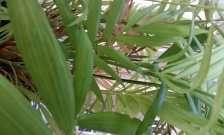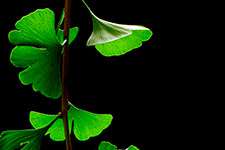
Natural medication generally is a double-edged sword and will have to be extra carefully investigated for each its really helpful and destructive results, say researchers writing in a unique complement of Science.
Co-written through King’s School London professionals, the thing evaluations botanicals that experience proven promising leads to treating fibrosis or tissue scarring, along side another herbs which might be related to pro-fibrotic harm to the liver, the kidney and a few different organs.
Round 45% of deaths in the United States may also be attributed to fibrotic sicknesses reminiscent of systemic sclerosis, heart problems, liver cirrhosis, lung fibrosis and revolutionary kidney illness. In fibrosis, customary wholesome tissue is changed through scar tissue, which in flip ceaselessly ends up in power organ failure. For plenty of of those power prerequisites no treatment these days exists, regardless of progresses in working out the mechanisms of fibrosis and pinpointing various imaginable drug objectives and anti-fibrotic drug leads.
The one anti-fibrotic drug these days registered in Europe and the United States, pirfenidone, has proven some really helpful results in sufferers with idiopathic pulmonary fibrosis and fibrotic kidney sicknesses, however its scientific efficacy on fibrosis stays equivocal. Quite a few natural medicinal merchandise reminiscent of the ones utilized in conventional Chinese language medication were reported to have some impact on fibrosis, however powerful medical proof of those botanicals as secure and efficient anti-fibrotic therapeutics is missing.
Silymarin, a mix of flavolignans from milk thistle, has been used to regard power liver sicknesses international. Fuzheng Huayu, a components extensively utilized in China to stop and opposite liver fibrosis, has not too long ago finished a Meals and Drug Management (FDA)-approved trial.
Contemporary research at King’s have investigated the anti-fibrotic actions of various natural merchandise within the laboratory, together with Fuzheng Huayu and Salvia miltiorrhiza root (SMR), a chief part of Fuzheng Huayu. A separate systematic evaluation of scientific remedies of power hepatitis B recognized SMR and its extracts as being some of the most sensible 5 natural entities reported to have probably the most potent anti-fibrotic actions.
Against this, some botanicals were implicated in inflicting fibrosis. In scientific stories from Beijing and Shanghai, for instance, herbs had been reported to account for 21-54% of drug-induced liver harm. Herbs have additionally been reported to be related to fibrosis of the center and kidney.
Kidney fibrosis is understood to be brought about through some Aristolochia taxa and different plant species containing aristolochic acids (AAs). In the past used medicinally in various nations, AA-containing vegetation at the moment are identified as a world well being risk and banned in maximum Western nations because of their affiliation with urinary malignancies and AA nephropathy (kidney illness), together with Balkan endemic nephropathy, which ends up from consuming grains infected through Aristolochia seeds.
Round one-third of the Taiwanese inhabitants ate up AA-containing herbs between 1997 and 2003, and AAN in the past accounted for as much as 10% of all instances of end-stage renal failure in Taiwan. The banning of AA-containing herbs, at the side of different efforts reminiscent of public-awareness campaigns, schooling of sufferers, investment for analysis into power kidney illness and provision of built-in care, has became Taiwan into some of the few areas the place the upward thrust within the choice of instances of end-stage renal failure has been curbed.
Dr Qihe Xu, Senior Lecturer in Renal Drugs at King’s School London and primary writer of the thing, says: “Fibrosis is a number one reason for mortality. This urgent problem should be addressed thru powerful methods, through creating efficacious anti-fibrotics and through fighting publicity to fibrogenic compounds. Given the contradictory and complicated roles botanicals play in fibrotic sicknesses, there may be an pressing want for research to research the efficacy, protection and excellent practices for botanical-based treatments.”
Professor Peter Hylands, Head of the Institute of Pharmaceutical Science at King’s and senior writer of the thing, says: “As a result of evidence-based medication is a moderately new thought in many nations, many scientific stories on natural remedy of fibrotic sicknesses were criticized as being of deficient high quality. At this time, with investment inadequate to determine and deal with excellent observe, botanical analysis is most often appeared to be a dangerous space, however there also are dangers if we overlook anti- and pro-fibrotic botanicals. Thus, we name for sustainable funding into this difficult however more and more necessary analysis box to inspire innovation and excellent observe.”
Additional information:
‘The quest for anti-fibrotic and pro-fibrotic botanicals’ through Qihe Xu, Yibin Feng, Pierre Duez, Bruce Hendry and Peter Hylands is printed in a unique complement of the magazine Science, The Artwork and Science of Conventional Chinese language Drugs, on Friday 19 December 2014. www.sciencemag.org/website/produc … _high_resolution.pdf
Quotation:
The quest for botanicals (2014, December 19)
retrieved 30 January 2023
from https://medicalxpress.com/information/2014-12-botanicals.html
This report is topic to copyright. Excluding any honest dealing for the aim of personal learn about or analysis, no
section is also reproduced with out the written permission. The content material is equipped for info functions most effective.
Supply By way of https://medicalxpress.com/information/2014-12-botanicals.html
















